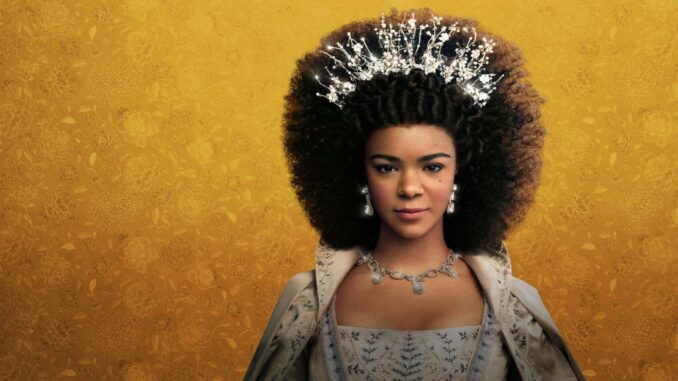
The true story of Queen Charlotte and King George
Here’s everything you need to know about the true story behind ‘Queen Charlotte: A Bridgerton Story’
Whether or not you’re watching, Netflix’s “Queen Charlotte: A Bridgerton Story” has taken the world by storm. An extension of the “Bridgerton” universe, “Queen Charlotte” delves into Queen Charlotte and King George’s marriage and the expectations placed on the young queen.
The show has garnered more interest than other “Bridgerton” stories — specifically due to the fact that “Queen Charlotte: A Bridgerton Story” is rooted in a real, historical story. But how accurate is “Queen Charlotte”? And what freedom did the creators take?
Here’s everything you need to know about the true story of Queen Charlotte and King George.
Who was Queen Charlotte in ‘Bridgerton’ based on?
Queen Charlotte was only 17 years old when she married King George III and became queen of England and Ireland, according to National Geographic.
Charlotte was born in 1744 in a German duchy called Mecklenburg-Strelitz, which is now northern Germany. Per National Geographic, Charlotte had an “unremarkable childhood” in a “mediocre and provincial dukedom.”
But this was all considered as beneficial to George’s — who took the throne in 1760 — political advisers. Charlotte was relatively unknown and, as a result, likely had “no political connections or aims,” according to National Geographic.
An emissary “proposed marriage on (George’s) behalf,” even though the pair never met, and Charlotte accepted. King George and Queen Charlotte were married in 1761, even though “she spoke no English and had never met her husband before her wedding day,” per National Geographic.
Was Queen Charlotte Black?
While “Bridgerton” creators are known for casting actors of color in stereotypically white roles, casting a Black actress as Queen Charlotte wasn’t out of left field. Rumors have been swirling around Queen Charlotte’s race for years.
Queen Charlotte was a direct descendent of Margarita de Castro y Sousa, which was, according to PBS, “a Black branch of the Portuguese royal house.” It is this Portuguese lineage that has caused historians to debate — did Queen Charlotte have brown skin or not?
According to National Geographic, some historians point to Charlotte’s portraits, which they believe depicts the queen with having “African” features. They argue that Charlotte was a light-skinned person of color, but was likely hiding her race to “conform with the era’s Eurocentric beauty ideals.”

But other historians argue that Charlotte’s Portuguese lineage was “so distant” that it most likely didn’t impact her physical appearance. Per National Geographic, these historians “argue that modern conceptions of race are what’s driving the belief that Charlotte was Black.”
Descriptions of Charlotte’s physical appearance at the time were varied. According to Vox, “A Tale of Two Cities” describes Charlotte as “a queen with a plain face.” Charlotte’s physician called her “small and crooked, with a true mulatto face.” According to a prime minister, “Her nose is too wide and her lips are too thick.”
While the debate continues, according to National Geographic, we’ll probably never know if Queen Charlotte was Black. “Since it’s impossible to determine how Charlotte really looked in real life, the argument will likely never be settled.”
Did King George love Queen Charlotte?
By all accounts, King George and Queen Charlotte had a very loving relationship. According to National Geographic, “the king and queen had an unusually happy marriage, and George III was a devoted father and husband.”
Speaking of Charlotte, King George said, “The queen is my physician, and no man can have a better; she is my friend, and no man can have a better one.”
The king and queen reported sleeping in the same bed, which was unusual for the time, until King George’s madness separated them, according to a paper published in the London Review of Books.
What caused the madness of King George?
In 1765, King George underwent a “so serious” mental affliction that “his preparations proposed having Charlotte temporarily take the throne while the king was incapacitated,” according to National Geographic.
The king recovered quickly, but continued to have multiple relapses. King George would experience “mania, depression, hallucinations, and convulsions,” per National Geographic, and even attacked and sexually assaulted members of his family.
Francis Burney, one of the queen’s attendants, wrote, “The queen is almost overpowered with some secret terror. I am affected beyond all expression in her presence, to see what struggles she makes to support serenity.”
Over time, George’s manic episodes turned longer, forcing him to be “isolated and even encumbered.” After his son, George, took over the throne as king regent, King George “will remain ill for the rest of his life,” according to National Geographic.
